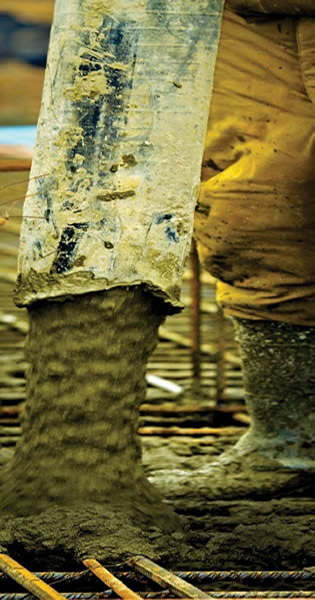Researchers in Malaysia have discovered that dried sewage sludge could be recycled by adding it to cement to make concrete.
They say the discovery could tackle two problems in Malaysia: the growing demand for concrete on one hand, and the difficulty of disposing of a rising volume of sewage sludge on the other.

Image via Universiti Teknologi MARA
Their experiments showed, however, that the higher the concentration of sludge in the concrete mix, the poorer was the product’s performance.
In a study published in the Pertanika Journal of Science and Technology, researchers from Universiti Teknologi MARA investigated the potential to replace various quantities of cement with processed sewage sludge to create a concrete mixture.
The researchers first produced domestic waste sludge powder (DWSP). They dried and burnt wet sludge cake to remove moisture, and then ground and sieved the dried sludge cake to make DWSP.
Using varying proportions of DWSP (between 3% and 15%), the researchers mixed the material with cement to produce normal strength and two higher strength grades of concrete. They then compared each DWSP concrete mixture with normal concrete in terms of their compressive strength, water absorption, water permeability and permeability to salt.
The researchers found that while DWSP has a potential role in the manufacture of concrete, the performance of DWSP concrete blends tends to decline with increasing concentrations of DWSP.
The compressive strengths of DWSP concrete generally decreased as the proportion of DWSP increased. Also, both water absorption and water permeability increased as the percentage of DWSP increased. However, resistance to salt increased for concretes containing up to 15% DWSP.
“Overall, there is potential for using DWSP as a partial cement replacement,” the researchers say. “However, more detailed research should be conducted to yield better quality powder.”
Next, the team will work on improving the quality of DWSP, based on previous research which showed that good quality DWSP can be produced when higher temperatures are used to incinerate the sludge.
They are currently studying the effect of a range of incineration temperatures, i.e. from 600°C to 1000°C. To evaluate the quality of the DWSP after incineration, they will mix it with cement at various concentrations and then measure the strength and durability of the mortar or concrete that are subsequently formed.
Disposing sludge left over from treating sewage water is a major challenge for wastewater plants in Malaysia. While studies show that the volume of sludge is expected to rise, disposal options are limited due to strict environmental regulations, including a ban on burying sludge in soil due to its high heavy metal content.
Meanwhile, the construction sector seeks economic and ecological cement replacement materials in order to meet an increasing demand for concrete.
Comments
Comments are closed.







One of the Sikh Missionaries [the Late Sant Singh Maskeen Singh Ji] did say that the human excrement was used to mix with grass to create fuel for the baking of bricks used in the foundation of the Sikh Golden Temple in Amritsar. The idea was given by a brick maker when the Guru Ji observed that the bricks being baked then were not all fully baked and the brick maker said that the heat for baking was not high enough and that if human excrement is mixed with grass the heat could be as high as 2000 centigrade which will ensure that all bricks will be fully baked and thus strong.
Bhai Manj was a leader of his community who sacrificed his status and wealth to became a follower of the Guru Ji offered to collect every morning the human excrement from the houses in the village to be used ot make the fuel. The method was used and from that day all bricks were fully baked and strong.
A few years ago the lake around the Holy Golden Temple was emptied and the Engineers invited to inspect the foundations to ensure that remedial works could be implemented before the water was released again. The engineering experts confirmed that the the over three centuries old foundations were so strong that no repairs were needed and further suggested that no changes should be made as they could not ascertain the concrete mix.
Above is understood to be a historical fact.